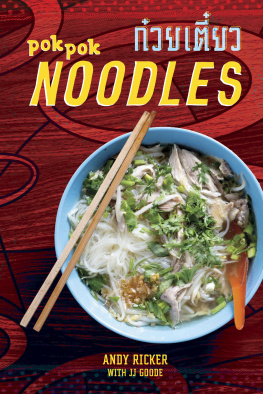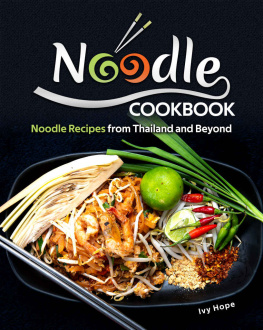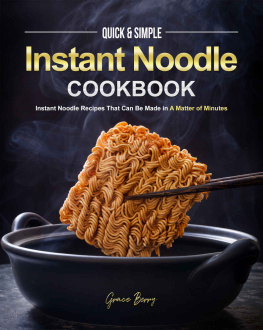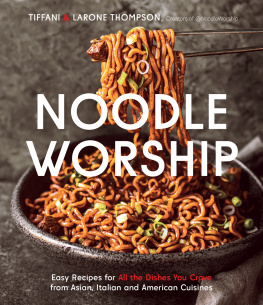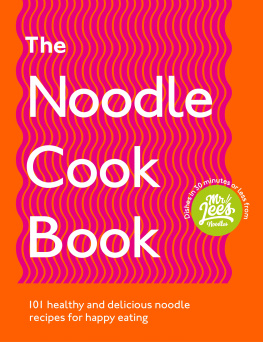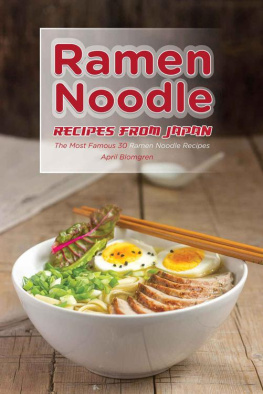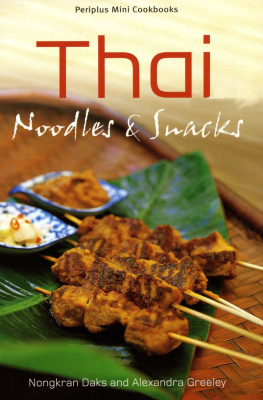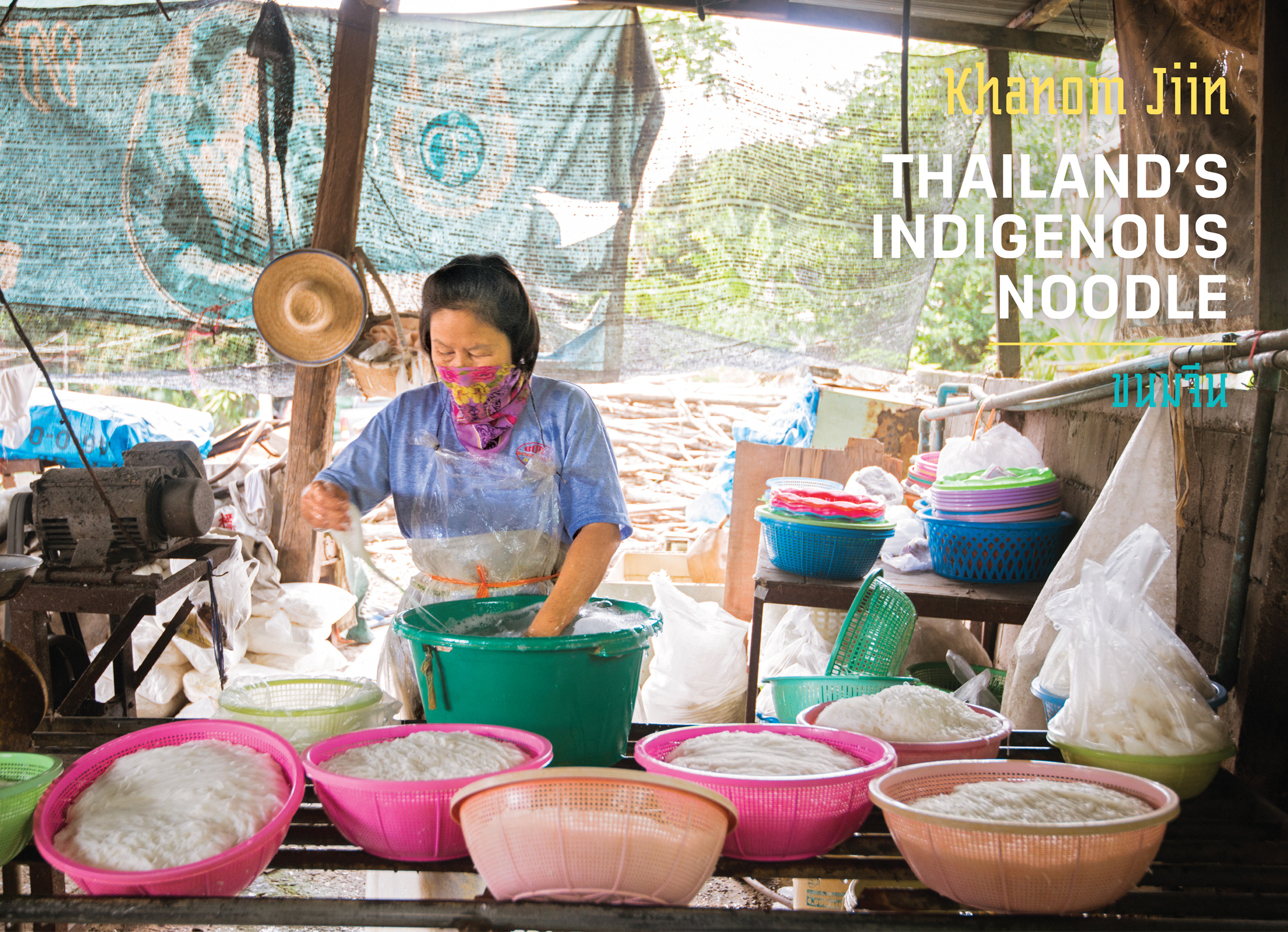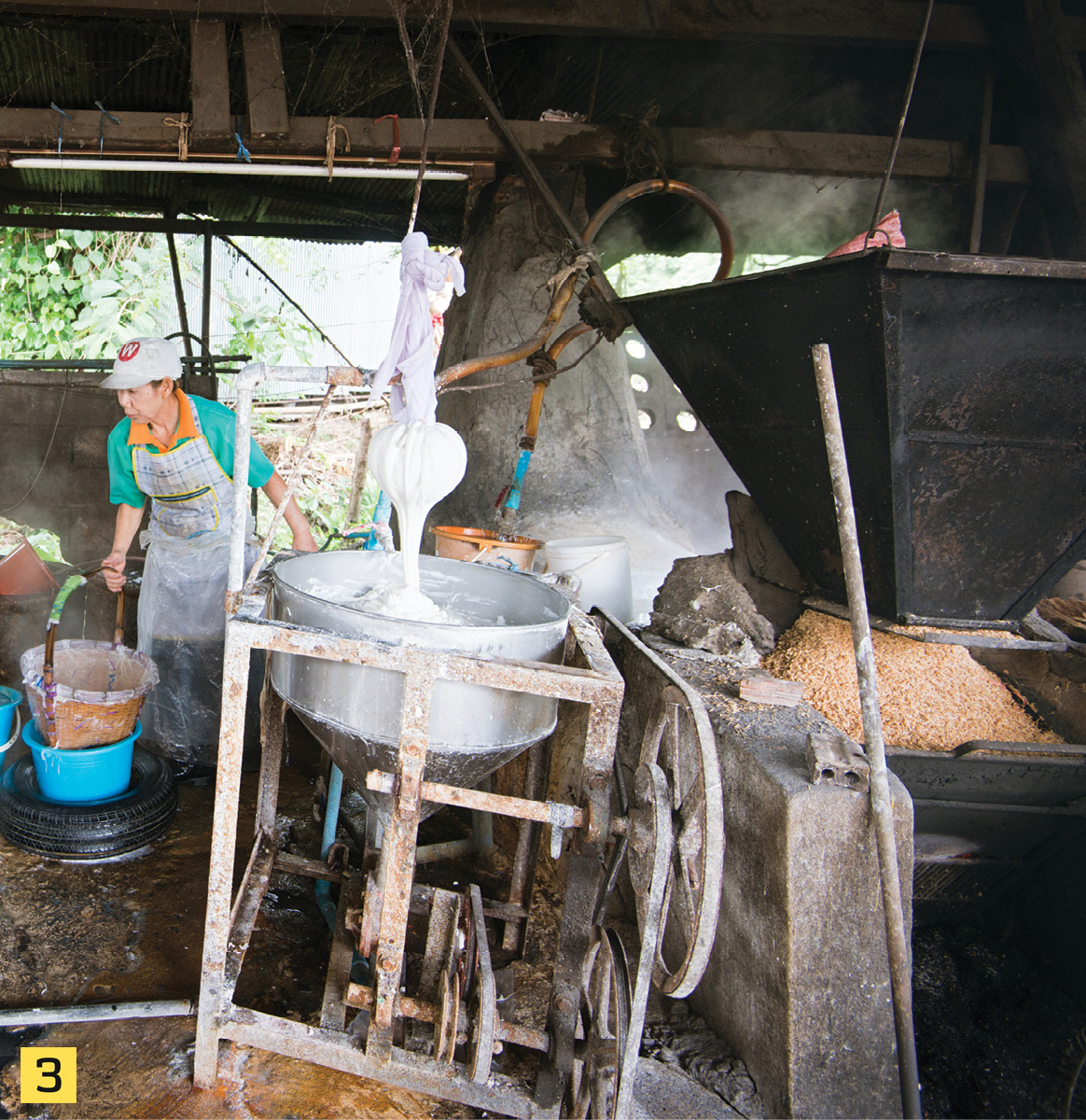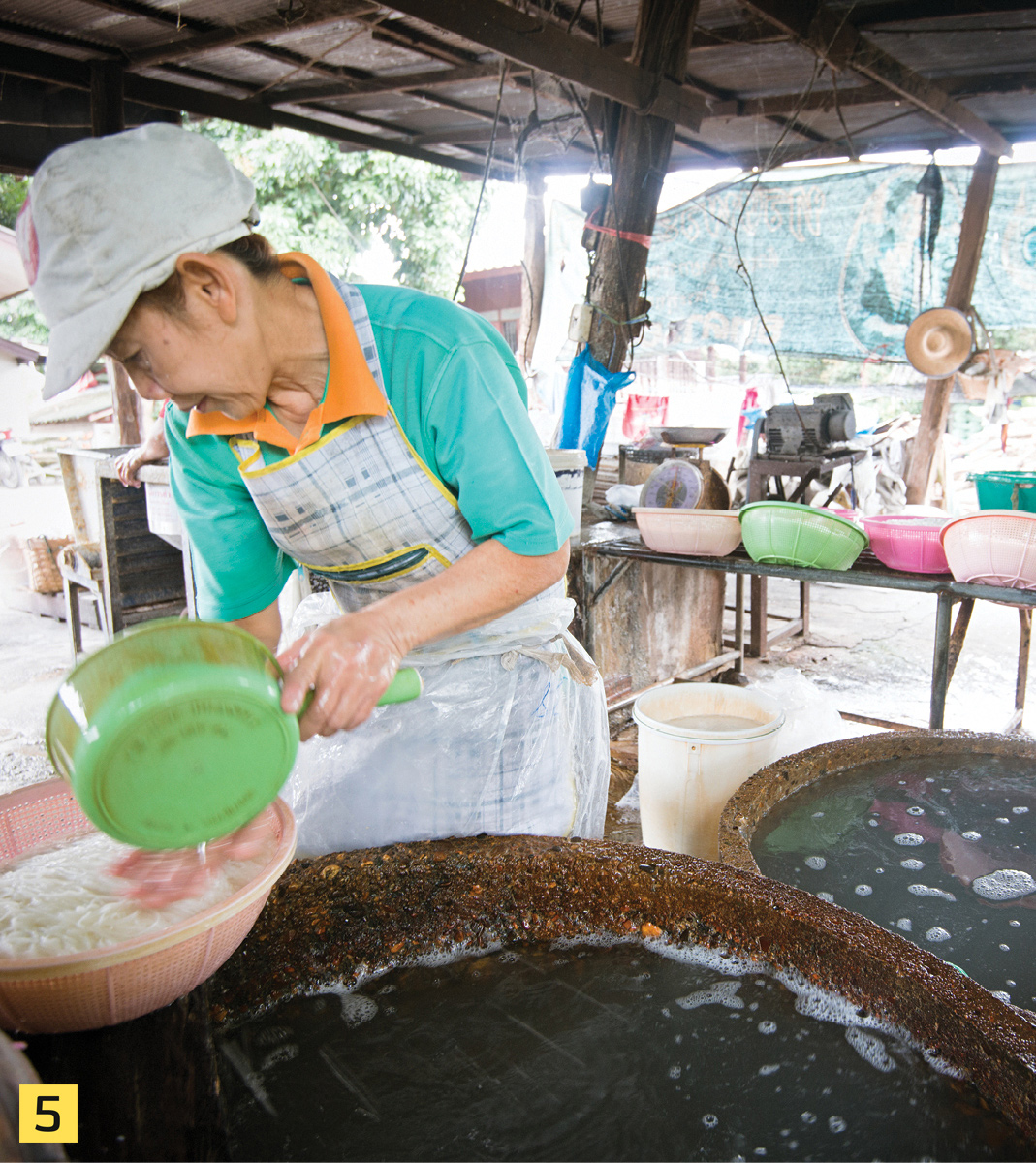Contents
Landmarks
Print Page List
Acknowledgments
This book would never have seen the light of day if it were not for JJ Goode, who busted his butt to transcribe my mutterings into something cohesive. Many other folks shared the burden of carrying this one across the finish line: Emma Rudolph, Emily Timberlake, Doug Ogan, Betsy Stromberg, Serena Sigona, and all the other good folks at Ten Speed Press; Kimberly Witherspoon, my amazing agent and trustworthy adviser; Austin Bush for his intrepid photographic endeavors and indispensable translation services (shout out to his assistant on this project, Beer Thanet); Kat Craddock for her diligent recipe testing; and Natcha Butdee (Goong), my lovely partner, who graciously allowed the team to take over our house to test and shoot the recipes, washed dishes, hand modeled, kept the cats at bay, and tasted more noodles than anyone should have to in a two-week period. And, of course, all the noodle vendors I have met over the years who have shared their wisdom, skill, and pride in their craft!
This book is dedicated to the memory of Anthony Bourdain, a noodle man extraordinaire.
ANDY RICKER worked in restaurants, elds, factories, shops, and construction sites all over the world before opening his rst restaurant, Pok Pok, in Portland, Oregon, in 2005. He has since gone on to open and close several other restaurants of a similar ilk in Portland, Los Angeles, and New York City, and is the founder of Som beverage company. A two-time James Beard Award winner and a once upon a time holder of a Michelin star for Pok Pok NY, Andy splits his time between Chiang Mai, Thailand, and Portland, Oregon. He is the author of Pok Pok: Food and Stories from the Streets, Homes, and Roadside Restaurants of Thailand and Pok Pok The Drinking Food of Thailand: A Cookbook.
JJ GOODE has co-authored several cookbooks including Pok Pok and Pok Pok The Drinking Food of Thailand with Andy Ricker, A Girl and Her Pig with April Bloomeld, and State Bird Provisions with Stuart Brioza and Nicole Krasinski.
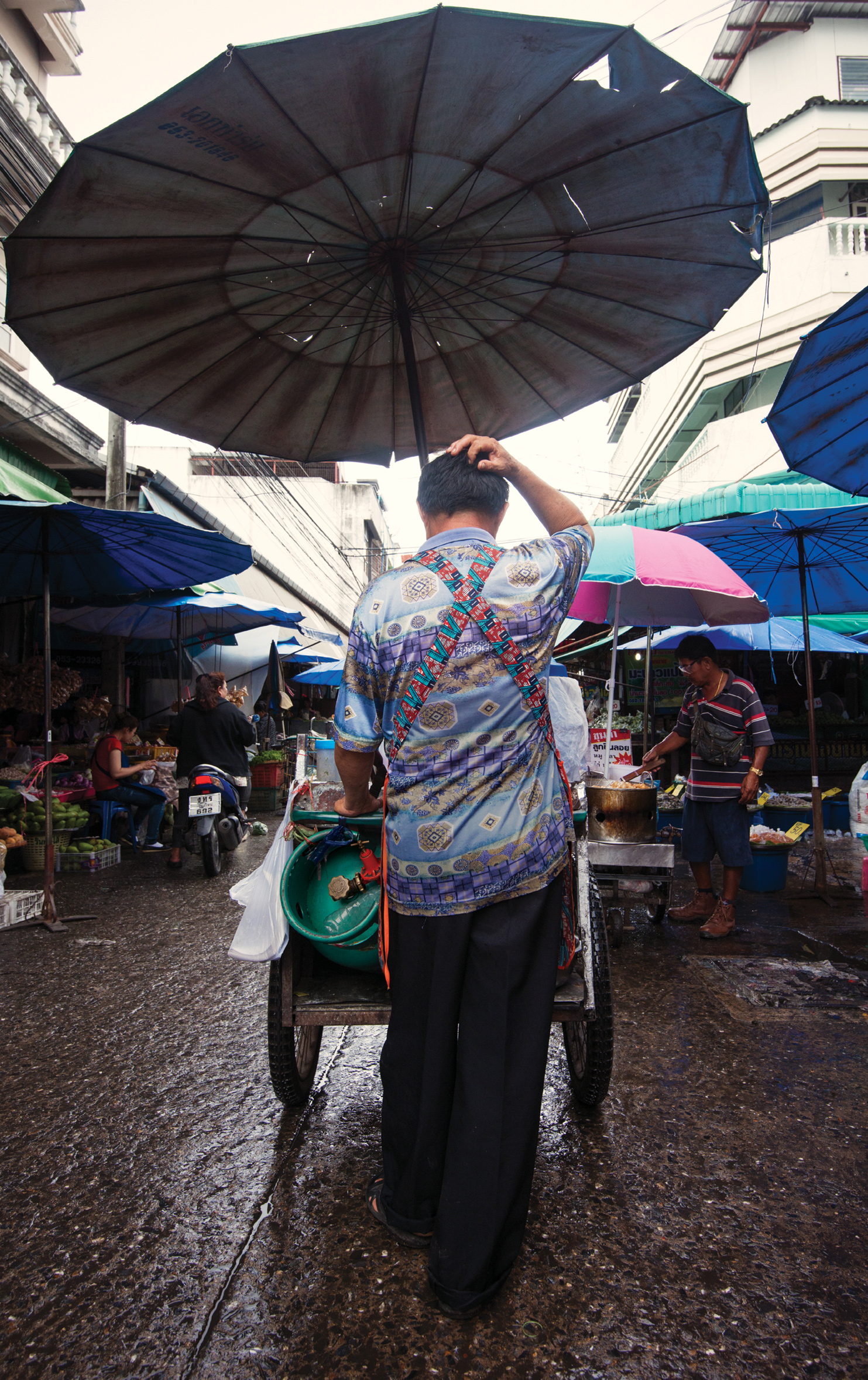
How Khanom Jiin is Made
I was in Chiang Mai, almost three decades ago, when I realized that everything I thought I knew about Thai food was wrong. Id come to the northern capital to visit my friend Chris and his wife, Lakhana, who had grown up nearby. A seasoned backpacker, I had eaten plenty of phat thai, coconut curry, and banana pancakes abroad. But the meals to which Lakhana guided me were unlike anything Id imagined eating in Thailand, let alone like what Id eaten before. Among the revelations were coils of thin, slightly sour noodles in a brothy curry served at a market stall. I didnt know it at the time, but I was eating khanom jiin, which, in a country enamored of all manner of noodles, has the distinction of being the only variety indigenous to Thailand.
While most of the noodles we associate with contemporary Thai food came to the country with Chinese immigrants, khanom jiin likely has roots with the Mon, an ethnic group who lived in what is now Thailand (and brought Buddhism to the country). Before mechanization turned these noodles into a food of the people, making them was a laborious process, cooks put together a dough of rice flour and water, fermented it, cooked half of it, combined the cooked and uncooked halves, and pounded the mixture by hand using enormous pestles until the dough was very smooth. After thinning this dough with water, they used a handheld press made of brass to extrude long strands directly into boiling water. Finally, they cooled the noodles in room-temperature water and formed skeins. No wonder the thin, slightly sour strands were typically reserved for the wealthy or exaltedthose with staff to perform the labor. Today, however, theyre ubiquitous and inexpensive, sold in skeins, like yarn, at markets throughout Thailand, though theyre particularly popular in the northern and southern regions of the country. As far as I can tell, sour khanom jiin are becoming harder to find, the step of fermenting the dough sacrificed to the demands of modernity.

Rice flour is mixed with water to make a dough (which is sometimes fermented for a few days to make it sour) and then boiled in its bag until the outer layer of the dough is cooked. The inner layer remains uncooked.
The half-cooked dough is put into a hopper with mixer hooks (often controlled with an old manual transmission repurposed from a car!). As it mixes, small amounts of water are added until it forms a silky batter.
The batter is strained through a fine-mesh cloth bag to remove lumps.
The batter is then transferred to another hopper and pumped through a nozzle that looks like a dish-rinsing sprayer to form long, thin strands that go directly into a huge boiling water bath, where they cook for a few minutes.
The cooked noodles are pulled from the boiling water with bamboo or plastic baskets, cooled in a large cold water bath, and rinsed.
6 & 7 The freshly made khanom jiin is quickly and expertly coiled into skeins by hand, then stacked in plastic-lined baskets for sale on the spot or for transport to the local market.
Replicating Khanom Jiin
RICE VERMICELLI
This chapter is devoted to the remarkable roster of sauces regularly served with khanom jiin at the stalls, restaurants, and all operations in between devoted to the noodle. To do them justice, you must produce a reasonable replica of khanom jiin, which is next to impossible to find in the US. (Unless, that is, youre lucky enough to live near a large Vietnamese community, like in L.A. Then you can skip these instructions and purchase fresh bun, the cultural equivalent to khanom jiin, in some Southeast Asian markets.)
First, you must buy the correct dried noodles, in this case dried thin, round rice noodles (about the thickness of angel hair pasta and sometimes labeled fine) that are straight rather than wavy. Due to mercurial labeling, the proper noodles may be called rice vermicelli or rice stick and often have the words Jiang Xi or Guilin on the label. If you can, buy the Three Ladies brand.
Next, you must boil the noodles, rinse them to remove excess starch, and then form them into coils, the latter an easy though optional step that gets you that much closer to the real thing. The noodles are best served at what I like to think of as Thai room temperaturecall it 90F, give or takeso either leave them by a warm oven for 10 minutes or so before serving or nuke them briefly in the microwave on low power. Dont store them in the fridge.

